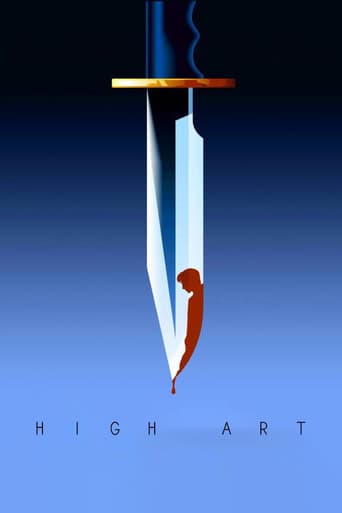ss336
This is a true masterpiece. One that brings together Greco-Roman culture, traditionalism vs modernism and the struggle of indigenous cultures against global capitalism, mirrors as mystical adjuncts to mundane life, future shock and so much more...The opening scene: the camera shows a woman in the window of a house. The camera moves back and we see that the house is being demolished by bulldozers. The woman is crying hysterically, and her face is full of anguish.. or is that a state of spiritual ecstasy? We can't easily tell the difference, as the Knieper music score modulates with a Mishima-like nervousnous. The camera moves up and higher, and we see the poor woman's home is an insignificant sacrifice in the cause of the towering skyscrapers and ultra-modern urban business landscape. The changing face of Brazil..The photographer main character is a witness, who occasionally, reluctantly 'steps out of the frame' and takes part in the great collision of colour and experience of Brazilian life, mostly focussing on the theme of 'evading death', which is said to be a 'male illusion' but which is intimately connected to survival - from the street junkies and prostitutes to the 'train surfer' youths he seeks out. Our encounter with Greek themes of manliness and justice and, most of all, tragedy and revenge, comes when the main character photographs an attempted robbery and a street 'duel' with knives that leaves 2 people dead at the hands of a man who appears to be of substance, and who is known to us only as 'Hermes' - the name of a Greek god and a clear allusion to Dumas's Three Musketeers. Debt is a theme 'we do like the Greeks and the Romans', 'you owe me', 'my debt is paid', 'I have come to pay my debt', masculinity is another (the disgust felt towards a man who murders women and marks their faces), and also revenge - blood for blood.The mirror - used as a training tool when training with a knife, but behind the mirror a young woman observes disapprovingly. She is us, or a part of ourselves, that has ceased to be sensation-seeking witness and has taken an active stake in the horrible nitty-gritty of the world of real life and flesh. We observe much as she does, except from behind the camera.. There is also karma - a fat rapist with a penchant for stabbing people downwards in the heart meets the same fate, the last words he hears being unintentionally a version of the torrid threats he himself used to issue. All along, there is the nervousness, the fear, the theme of being outside or inside, always reminding us of the smashing of the house and its walls of safety. After our hero exacts revenge for the sake of his friend, he feels himself a total and complete outsider, and his photography habits change so that he photographs the mundane human experience of love between a man and a woman. No longer does he photograph the human juggling with imminent death: he has experienced that as an insider but has changed. And yet he can't go back...At the end, Hermes is of course the protector of travellers but the hero becomes an unwilling nomad who really seeks stability and married life, but can no longer have it. Like Hermes himself, who wants to return to his own country... Very moving, and brilliant.
Linda_S
Tchéky Karyo is frankly OUTSTANDING in his role as Hermes. The disturbing, quiet, intense, dangerous man, superb! I feel this is Peter Coyote at his best, a vulnerable, intelligent, humane man who comes face to face with the reality of life that previously he had only viewed through the lens of his camera.Again those remarkably talented Brazilian actors and actresses just continuously amaze me. As in another film I very much enjoyed that was shot in Brazil, BOCA, the Brazilian talent is immense. Previous comments have outlined the plot and so forth. I would only add that this film is tense and one comes away from it with a sense of discomfort, and that is something to be so affected by a film when all too often once the house lights come on there is no residual emotional connection.I noted on the main details page that the Spanish version is several minutes longer than the USA video version and that REALLY irks me. This should be available, as should Zalman King's BOCA, on DVD and in full length, unedited, uncut, uncensored.If one just wants to waste a couple of hours in amusement this is not the film to see, if one wants to have a visceral reaction and to be taken by one's collar and dragged into the frenetic and all too grim world of the invisible people of a great metropolis then by all means see EXPOSURE aka A GRANDE ARTE.
edubarioni
When I saw this movie I thought it was the renaissance of the Brazilian Cinema. I was wrong.Anyways this movie I consider one of the best of Walter Salles. A movie the He himself doesn't even like to talk about it, because of a lots of studios interference.The photographer, José Roberto Eliezer, should be awarded for the first sequence of this movie.It's a very good Brazilian cast and I, with 16 years old, believed that I was watching movie by Brazilwood.I guess I reached 10 lines.
jax-21
I believe this oddly successful film was also aired on US television (Bravo channel) as "Exposure". I have never seen it under the other titles listed. The knife techniques are very professional and effective, as is the explanation of selection of weapons.

